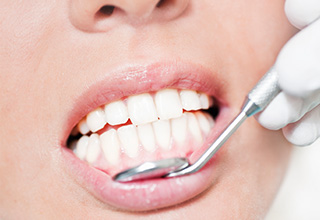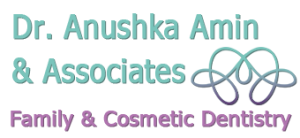Periodontal Therapy
REVITALIZE YOUR GUM HEALTH
Did you know that nearly half of American adults are expected to suffer from a mild to an advanced form of gum disease? Also known as periodontal disease, this infection is one of the most common health problems in the world, and it can eventually threaten your natural teeth and bone structure if it’s left untreated for too long. Thankfully, our experienced dental team can put a stop to it here in Conyers. As soon as Dr. Amin discovers concerning signs of gum disease, they can recommend effective therapy options that will cleanse the mouth of harmful bacteria and help get your smile back on the right track.
Has it been more than six months since your last dental appointment? If so, don’t hesitate to contact our practice today and schedule an appointment.

How Do I Know if I Have Gum Disease?
The most common symptoms include:
- Gums that regularly bleed when you’re brushing or flossing
- Excessive bad breath that remains even after practicing oral hygiene and/or using mouthwash
- Teeth that appear longer over time (a sign of gum recession)
- Gum tissue that looks strangely red or swollen
- Gum tissue that is very tender to the touch

How Do You Treat Gum Disease?
- Scaling and root planing is an in-depth cleaning that can thoroughly get rid of infectious bacteria from areas of the mouth that aren’t included in a regular hygiene appointment. First, our team will perform the “scaling” portion by combing the areas underneath the gum line. Then, during the “root planing” portion, we’ll target the tooth root surfaces, which can become rough over time and attract accumulations of plaque and tartar. By smoothing the area, we can reduce the risk of future flare-ups.
- Antibiotic therapy may be performed alone, but it is most commonly paired with scaling and root planing. By applying the medication directly to the treated gum tissue, we can catch and eliminate any remaining bacteria that was left behind during the initial treatment, as well as potentially reduce the size of the periodontal pockets.
